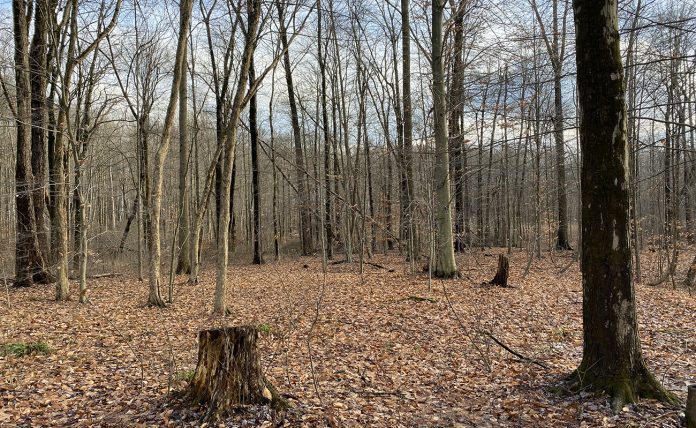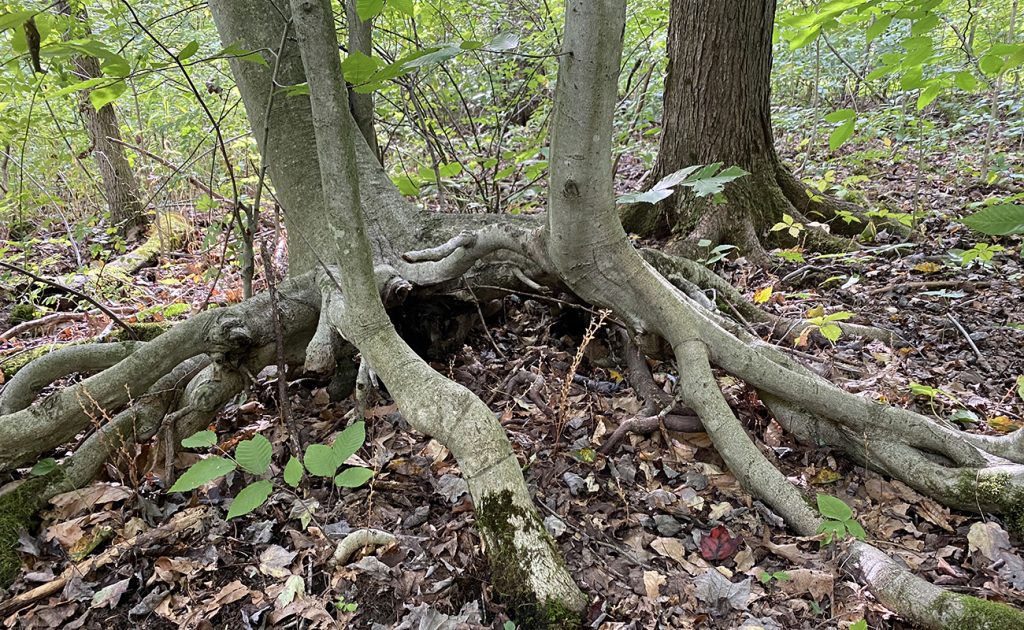
Over the weekend, high winds blew down snags, broken and rotted limbs and even uprooted some trees. While I was feeding my daughter’s rabbits Saturday, I heard large limbs and trees crashing down in the woods beyond my yard. Despite the warmer weather, I didn’t stay out long because of the dangers caused by the wind.
Throughout winter there are obvious and inconspicuous dangers related to weather that hikers and other outdoor enthusiasts should be aware of before venturing into the woods.
The trees
A forest wouldn’t be a forest without the trees. Trees that have grown oddly have been some of my favorite discoveries on hikes through the woods. My imagination definitely has a way of running away with me, turning intricate above-ground root systems into hobbit holes and large tumor-like growths into faces. If you ask me, the trees are the guardians of the forest. Examining their anomalies will keep me coming back to the woods for the rest of my life.

Even in a healthy woodlot, trees die regularly. Snags actually help support wildlife by providing food and shelter. In years of known pest and disease outbreaks, take extra caution after storms and during the winter as more widespread mortality can be a result.
After a tree dies, it begins to degrade. First, its twigs and branches become brittle and break off. Then larger structural limbs will depart until all that’s left is the trunk. Over the course of several years, the tunk will degrade until it finally breaks off and topples, as well.
Most trees degrade slowly after death, but not all. For example, ash trees have been known to degrade rapidly and break off midway up the trunk.
There’s nothing you can do to prevent the natural aging of the forest outside of good management if it’s your property and mindfulness to prevent the spread of pests and diseases. However, you can improve safety by staying out of the woods during extreme weather and evaluating trails after.
High winds can damage tree tops and limbs, causing them to crash to the forest floor or get hung up in the canopy. That’s why it’s important to flag areas with dead trees and spots where dangling limbs could give way under the weight of snow and ice or during strong winds.

Dress for the weather
Wearing the proper clothes and personal protective equipment is important year-round, but maybe even more crucial in the winter.
Boots. Always wear sturdy, waterproof boots on winter hikes in the woods. Good boots can prevent injuries on uneven ground and keep you dry and warm.
Hat. Many foresters wear hard hats in the woods when they are out working and it’s not a bad idea. When you’re out hiking in the woods protecting your head with any type of hat is better than nothing. It will help cushion your head from falling snow, ice, mast or branches that may come down and it will keep you warm.
Clothing. Wear clothing that can hold up to brush, vines and brambles to protect your skin. On cold days, dress in layers to stay warm. Sunglasses are also a good idea if there’s snow to protect your eyes from the sun.
Beware of Ticks
Ticks are active year-round and especially so during warmer, wetter weather. When you’re planning to go hiking in the woods or even grassy fields make sure to protect yourself from ticks.
Clothing. Clothing can protect you from ticks by eliminating entry points and sealing off your skin. Tuck your pants or base layer (leggings or long underwear) into your socks to eliminate entry points at your ankles. Seal off entry points at your waist by tucking your shirt into your pants. By reducing openings, you’re increasing your odds of noticing a tick before it reaches your skin.
Permethrin-treated clothes can also help to repel ticks.
Tick check. Always do a tick check after a day in the woods. Time is a factor in the transmission of many tick-borne diseases. If you find a tick, remove it with tweezers, taking care to pull out all of its mouthparts. Then place it in a freezer bag labeled with the date and location of the bite and put it in the freezer. If you start to feel ill, you can have the frozen tick tested for tick-borne diseases, which will help with treatment.
Essentials
No matter what time of year it is, make sure you always have the essentials when hiking.
- Water
- First Aid Kit
- Flashlight
- Whistle
- Trail Food
- Sun protection
- Compass and map
It’s also a good idea to make sure you have a charged cell phone in case of emergency if there will be service where you are hiking. And always make sure you tell someone where you are going and when you expect to return.










